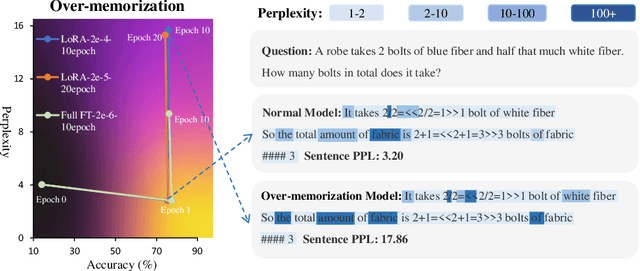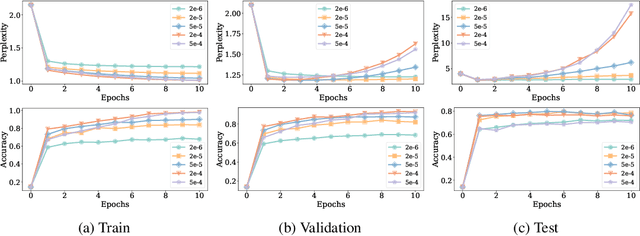Peng Li
DJI Innovations Inc
Object-IR: Leveraging Object Consistency and Mesh Deformation for Self-Supervised Image Retargeting
Oct 31, 2025Abstract:Eliminating geometric distortion in semantically important regions remains an intractable challenge in image retargeting. This paper presents Object-IR, a self-supervised architecture that reformulates image retargeting as a learning-based mesh warping optimization problem, where the mesh deformation is guided by object appearance consistency and geometric-preserving constraints. Given an input image and a target aspect ratio, we initialize a uniform rigid mesh at the output resolution and use a convolutional neural network to predict the motion of each mesh grid and obtain the deformed mesh. The retargeted result is generated by warping the input image according to the rigid mesh in the input image and the deformed mesh in the output resolution. To mitigate geometric distortion, we design a comprehensive objective function incorporating a) object-consistent loss to ensure that the important semantic objects retain their appearance, b) geometric-preserving loss to constrain simple scale transform of the important meshes, and c) boundary loss to enforce a clean rectangular output. Notably, our self-supervised paradigm eliminates the need for manually annotated retargeting datasets by deriving supervision directly from the input's geometric and semantic properties. Extensive evaluations on the RetargetMe benchmark demonstrate that our Object-IR achieves state-of-the-art performance, outperforming existing methods in quantitative metrics and subjective visual quality assessments. The framework efficiently processes arbitrary input resolutions (average inference time: 0.009s for 1024x683 resolution) while maintaining real-time performance on consumer-grade GPUs. The source code will soon be available at https://github.com/tlliao/Object-IR.
AI Mathematician as a Partner in Advancing Mathematical Discovery -- A Case Study in Homogenization Theory
Oct 30, 2025Abstract:Artificial intelligence (AI) has demonstrated impressive progress in mathematical reasoning, yet its integration into the practice of mathematical research remains limited. In this study, we investigate how the AI Mathematician (AIM) system can operate as a research partner rather than a mere problem solver. Focusing on a challenging problem in homogenization theory, we analyze the autonomous reasoning trajectories of AIM and incorporate targeted human interventions to structure the discovery process. Through iterative decomposition of the problem into tractable subgoals, selection of appropriate analytical methods, and validation of intermediate results, we reveal how human intuition and machine computation can complement one another. This collaborative paradigm enhances the reliability, transparency, and interpretability of the resulting proofs, while retaining human oversight for formal rigor and correctness. The approach leads to a complete and verifiable proof, and more broadly, demonstrates how systematic human-AI co-reasoning can advance the frontier of mathematical discovery.
An Automatic Detection Method for Hematoma Features in Placental Abruption Ultrasound Images Based on Few-Shot Learning
Oct 24, 2025Abstract:Placental abruption is a severe complication during pregnancy, and its early accurate diagnosis is crucial for ensuring maternal and fetal safety. Traditional ultrasound diagnostic methods heavily rely on physician experience, leading to issues such as subjective bias and diagnostic inconsistencies. This paper proposes an improved model, EH-YOLOv11n (Enhanced Hemorrhage-YOLOv11n), based on small-sample learning, aiming to achieve automatic detection of hematoma features in placental ultrasound images. The model enhances performance through multidimensional optimization: it integrates wavelet convolution and coordinate convolution to strengthen frequency and spatial feature extraction; incorporates a cascaded group attention mechanism to suppress ultrasound artifacts and occlusion interference, thereby improving bounding box localization accuracy. Experimental results demonstrate a detection accuracy of 78%, representing a 2.5% improvement over YOLOv11n and a 13.7% increase over YOLOv8. The model exhibits significant superiority in precision-recall curves, confidence scores, and occlusion scenarios. Combining high accuracy with real-time processing, this model provides a reliable solution for computer-aided diagnosis of placental abruption, holding significant clinical application value.
SyncHuman: Synchronizing 2D and 3D Generative Models for Single-view Human Reconstruction
Oct 09, 2025Abstract:Photorealistic 3D full-body human reconstruction from a single image is a critical yet challenging task for applications in films and video games due to inherent ambiguities and severe self-occlusions. While recent approaches leverage SMPL estimation and SMPL-conditioned image generative models to hallucinate novel views, they suffer from inaccurate 3D priors estimated from SMPL meshes and have difficulty in handling difficult human poses and reconstructing fine details. In this paper, we propose SyncHuman, a novel framework that combines 2D multiview generative model and 3D native generative model for the first time, enabling high-quality clothed human mesh reconstruction from single-view images even under challenging human poses. Multiview generative model excels at capturing fine 2D details but struggles with structural consistency, whereas 3D native generative model generates coarse yet structurally consistent 3D shapes. By integrating the complementary strengths of these two approaches, we develop a more effective generation framework. Specifically, we first jointly fine-tune the multiview generative model and the 3D native generative model with proposed pixel-aligned 2D-3D synchronization attention to produce geometrically aligned 3D shapes and 2D multiview images. To further improve details, we introduce a feature injection mechanism that lifts fine details from 2D multiview images onto the aligned 3D shapes, enabling accurate and high-fidelity reconstruction. Extensive experiments demonstrate that SyncHuman achieves robust and photo-realistic 3D human reconstruction, even for images with challenging poses. Our method outperforms baseline methods in geometric accuracy and visual fidelity, demonstrating a promising direction for future 3D generation models.
PanoLAM: Large Avatar Model for Gaussian Full-Head Synthesis from One-shot Unposed Image
Sep 09, 2025



Abstract:We present a feed-forward framework for Gaussian full-head synthesis from a single unposed image. Unlike previous work that relies on time-consuming GAN inversion and test-time optimization, our framework can reconstruct the Gaussian full-head model given a single unposed image in a single forward pass. This enables fast reconstruction and rendering during inference. To mitigate the lack of large-scale 3D head assets, we propose a large-scale synthetic dataset from trained 3D GANs and train our framework using only synthetic data. For efficient high-fidelity generation, we introduce a coarse-to-fine Gaussian head generation pipeline, where sparse points from the FLAME model interact with the image features by transformer blocks for feature extraction and coarse shape reconstruction, which are then densified for high-fidelity reconstruction. To fully leverage the prior knowledge residing in pretrained 3D GANs for effective reconstruction, we propose a dual-branch framework that effectively aggregates the structured spherical triplane feature and unstructured point-based features for more effective Gaussian head reconstruction. Experimental results show the effectiveness of our framework towards existing work.
FormaRL: Enhancing Autoformalization with no Labeled Data
Aug 26, 2025Abstract:Autoformalization is one of the central tasks in formal verification, while its advancement remains hindered due to the data scarcity and the absence efficient methods. In this work we propose \textbf{FormaRL}, a simple yet efficient reinforcement learning framework for autoformalization which only requires a small amount of unlabeled data. FormaRL integrates syntax check from Lean compiler and consistency check from large language model to calculate the reward, and adopts GRPO algorithm to update the formalizer. We also curated a proof problem dataset from undergraduate-level math materials, named \textbf{uproof}, in the hope to facilitate the exploration of autoformalization and theorem proving in advanced math. Experiments show that FormaRL can increase the pass@1 autoformalization accuracy of Qwen2.5-Coder-7B-Instruct by 4 $\sim$ 6x (4.04\% $\to$ 26.15\% on ProofNet and 2.4\% $\to$ 9.6\% on uproof) with merely 859 unlabeled data. And on uproof our method also achieved a strong improvement in out-of-distribution performance compared to existing open-source state-of-the-art autoformalizers on both pass@1 accuracy (6.2\% $\to$ 9.6\%) and pass@16 accuracy (24.4\% $\to$ 33.6\%). Training code of FormaRL is open-sourced at https://github.com/THUNLP-MT/FormaRL.
Federated Fine-Tuning of Sparsely-Activated Large Language Models on Resource-Constrained Devices
Aug 26, 2025Abstract:Federated fine-tuning of Mixture-of-Experts (MoE)-based large language models (LLMs) is challenging due to their massive computational requirements and the resource constraints of participants. Existing working attempts to fill this gap through model quantization, computation offloading, or expert pruning. However, they cannot achieve desired performance due to impractical system assumptions and a lack of consideration for MoE-specific characteristics. In this paper, we propose FLUX, a system designed to enable federated fine-tuning of MoE-based LLMs across participants with constrained computing resources (e.g., consumer-grade GPUs), aiming to minimize time-to-accuracy. FLUX introduces three key innovations: (1) quantization-based local profiling to estimate expert activation with minimal overhead, (2) adaptive layer-aware expert merging to reduce resource consumption while preserving accuracy, and (3) dynamic expert role assignment using an exploration-exploitation strategy to balance tuning and non-tuning experts. Extensive experiments on LLaMA-MoE and DeepSeek-MoE with multiple benchmark datasets demonstrate that FLUX significantly outperforms existing methods, achieving up to 4.75X speedup in time-to-accuracy.
ColorGS: High-fidelity Surgical Scene Reconstruction with Colored Gaussian Splatting
Aug 26, 2025Abstract:High-fidelity reconstruction of deformable tissues from endoscopic videos remains challenging due to the limitations of existing methods in capturing subtle color variations and modeling global deformations. While 3D Gaussian Splatting (3DGS) enables efficient dynamic reconstruction, its fixed per-Gaussian color assignment struggles with intricate textures, and linear deformation modeling fails to model consistent global deformation. To address these issues, we propose ColorGS, a novel framework that integrates spatially adaptive color encoding and enhanced deformation modeling for surgical scene reconstruction. First, we introduce Colored Gaussian Primitives, which employ dynamic anchors with learnable color parameters to adaptively encode spatially varying textures, significantly improving color expressiveness under complex lighting and tissue similarity. Second, we design an Enhanced Deformation Model (EDM) that combines time-aware Gaussian basis functions with learnable time-independent deformations, enabling precise capture of both localized tissue deformations and global motion consistency caused by surgical interactions. Extensive experiments on DaVinci robotic surgery videos and benchmark datasets (EndoNeRF, StereoMIS) demonstrate that ColorGS achieves state-of-the-art performance, attaining a PSNR of 39.85 (1.5 higher than prior 3DGS-based methods) and superior SSIM (97.25\%) while maintaining real-time rendering efficiency. Our work advances surgical scene reconstruction by balancing high fidelity with computational practicality, critical for intraoperative guidance and AR/VR applications.
Unveiling Over-Memorization in Finetuning LLMs for Reasoning Tasks
Aug 06, 2025



Abstract:The pretrained large language models (LLMs) are finetuned with labeled data for better instruction following ability and alignment with human values. In this paper, we study the learning dynamics of LLM finetuning on reasoning tasks and reveal the uncovered over-memorization phenomenon during a specific stage of LLM finetuning. At this stage, the LLMs have excessively memorized training data and exhibit high test perplexity while maintaining good test accuracy. We investigate the conditions that lead to LLM over-memorization and find that training epochs and large learning rates contribute to this issue. Although models with over-memorization demonstrate comparable test accuracy to normal models, they suffer from reduced robustness, poor out-of-distribution generalization, and decreased generation diversity. Our experiments unveil the over-memorization to be broadly applicable across different tasks, models, and finetuning methods. Our research highlights that overparameterized, extensively finetuned LLMs exhibit unique learning dynamics distinct from traditional machine learning models. Based on our observations of over-memorization, we provide recommendations on checkpoint and learning rate selection during finetuning.
Writing-RL: Advancing Long-form Writing via Adaptive Curriculum Reinforcement Learning
Jun 06, 2025Abstract:Recent advances in Large Language Models (LLMs) have enabled strong performance in long-form writing, yet existing supervised fine-tuning (SFT) approaches suffer from limitations such as data saturation and restricted learning capacity bounded by teacher signals. In this work, we present Writing-RL: an Adaptive Curriculum Reinforcement Learning framework to advance long-form writing capabilities beyond SFT. The framework consists of three key components: Margin-aware Data Selection strategy that prioritizes samples with high learning potential, Pairwise Comparison Reward mechanism that provides discriminative learning signals in the absence of verifiable rewards, and Dynamic Reference Scheduling approach, which plays a particularly critical role by adaptively adjusting task difficulty based on evolving model performance. Experiments on 7B-scale writer models show that our RL framework largely improves long-form writing performance over strong SFT baselines. Furthermore, we observe that models trained with long-output RL generalize surprisingly well to long-input reasoning tasks, potentially offering a promising perspective for rethinking long-context training.
 Add to Chrome
Add to Chrome Add to Firefox
Add to Firefox Add to Edge
Add to Edge